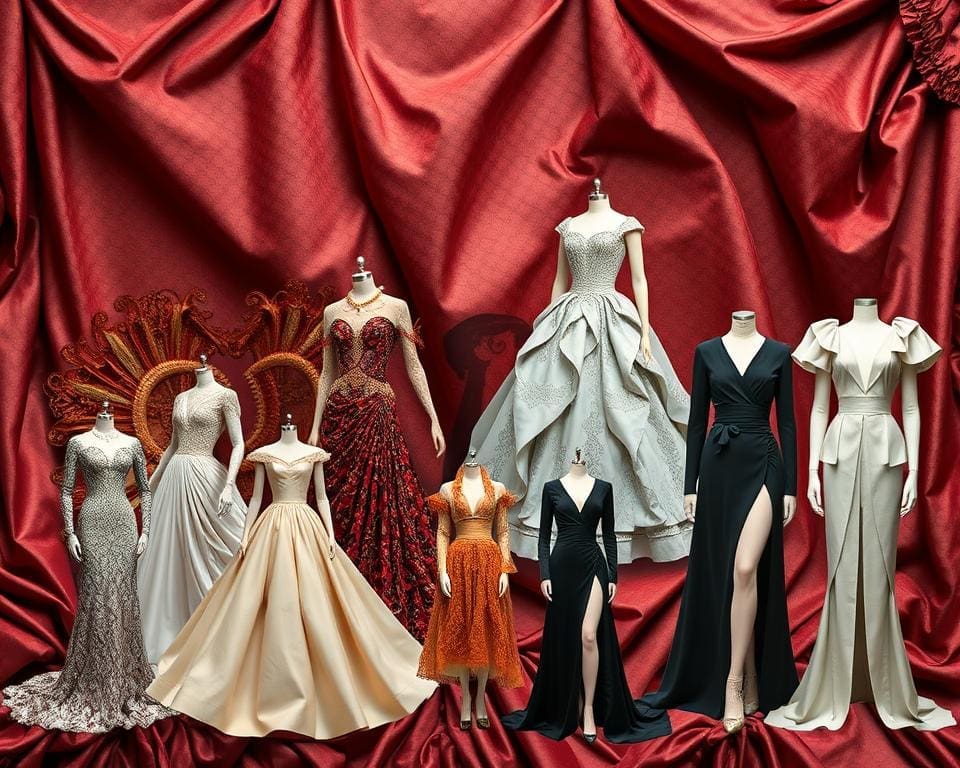Haute Couture stands as a symbol of luxury, artistry, and meticulous craftsmanship, deeply rooted in a rich history that spans decades. Its remarkable journey, originating in Paris during the mid-19th century, has seen the fashion world transform dramatically, adapting to cultural and technological shifts. This overview touches on the essence of Haute Couture history, highlighting how it has evolved from past to present while maintaining its exclusivity and bespoke nature. In this article, we’ll delve into the key milestones of Haute Couture fashion, uncovering the influential designers that have shaped its legacy and the innovations that continue to define it today.
Understanding the Origins of Haute Couture
The fascinating journey of Haute Couture begins in the heart of France, specifically in Paris, where fashion rapidly evolved into an art form. The city became a haven for creativity and craftsmanship, attracting talented dressmakers who catered to the elite. During the early 19th century, the demand for luxurious and bespoke garments surged, laying the groundwork for what would become the hallmark of high fashion.
Early Beginnings in France
The burgeoning fashion scene was characterised by talented artisans who meticulously crafted garments tailored to individual preferences. These dressmakers showcased their skills through intricate designs and luxurious fabrics. This era marked a significant change in the Haute Couture timeline, transforming dressmaking into an exclusive industry. Clients sought not merely clothing but unique, handcrafted pieces that reflected their status and taste.
The Role of Charles Frederick Worth
No discussion of Haute Couture origins would be complete without mentioning Charles Frederick Worth. Arriving in Paris from England in the 1850s, Worth recognised the potential for fashion marketing. He established his own fashion house, where he introduced innovative practices that revolutionised the industry. Worth is often recognised as the ‘father of Haute Couture’ for presenting seasonal collections in a structured manner and launching the concept of the fashion show.
His influence extended beyond mere aesthetics. By creating a distinct brand identity, Worth changed the relationship between designers and clients. The establishment of the Chambre Syndicale de la Haute Couture in 1868 provided formal recognition to the exclusive nature of Haute Couture, ensuring that artistry and traditional craftsmanship remained at the forefront of fashion innovation.

The Evolution of Haute Couture: From Past to Present
Haute Couture has evolved significantly, marked by key milestones that have shaped its identity over the years. The innovations brought forth by influential designers and technological advancements have enhanced the artistry of fashion, creating an everlasting impact on the industry.
Key Milestones in Haute Couture History
Throughout history, several Haute Couture milestones stand out, defining the essence of fashion. The inception of the term *Haute Couture* itself in the mid-19th century set a precedent for bespoke fashion, where handmade garments were tailored to individuals. The 1920s introduced a revolutionary era with the rise of the flapper dress, symbolising women’s newfound independence.
Influential Haute Couture Designers Over the Decades
Influential designers have been central in driving the narrative of Haute Couture. Coco Chanel redefined femininity with her elegant and comfortable designs, eliminating the constraints of corsets. Christian Dior’s ‘New Look,’ introduced in 1947, mesmerised the world with its sharply tailored waist and voluminous skirts, a tribute to post-war femininity and optimism. Each designer’s unique vision contributes to the rich tapestry of Haute Couture’s evolution, setting trends and inspiring successors.
Technological Innovations in Fashion
Technological innovations have played a vital role in the progression of Haute Couture. The introduction of sewing machines advanced the craft, allowing for more intricate designs. Fabrics developed through innovative techniques opened new avenues for creativity. In recent years, digital technology has transformed how haute couture is conceptualised and marketed, connecting designers with diverse audiences while retaining the bespoke allure that characterises this elite fashion segment.
Haute Couture Trends Through the Ages
Fashion has always been a reflection of society, and Haute Couture trends serve as a vivid illustration of this connection. Each era brought with it distinct styles, shaped by the cultural landscape and social changes in fashion. Understanding these transformations provides insight into how Haute Couture not only adapts but also thrives amidst the tides of fashion history.
Styles That Defined Eras
The evolution of Haute Couture can be marked by pivotal styles that encapsulated the essence of their times. For instance:
- The flapper dresses of the 1920s symbolised liberation and a break from traditional norms.
- The diaphanous gowns of the 1950s echoed post-war optimism, celebrating femininity and sophistication.
- The structured power suits of the 1980s reflected women’s increasing presence in the corporate world, asserting authority and independence.
These styles highlight how Haute Couture trends often mirror broader societal shifts, capturing the zeitgeist within their intricate designs.
The Influence of Social Changes on Fashion
Haute Couture is deeply intertwined with social changes in fashion. Movements advocating for civil rights, feminism, and environmental consciousness have profoundly influenced designers’ creativity and perspectives. For example, the feminist movement prompted designers like Yves Saint Laurent to introduce trousers for women, challenging gender norms and redefining femininity.
As cultural narratives evolve, so does Haute Couture, demonstrating its resilience and ability to remain relevant. Each trend serves not merely as a visual aesthetic but as a powerful commentary on the social fabric of its time.
Modern Haute Couture Techniques and Innovations
In the ever-evolving landscape of fashion, modern Haute Couture techniques showcase a remarkable blend of artistry and technology. Contemporary designers are embracing innovations in fashion that revolutionise not only the design process but also the relationship between the designer and the audience. Methods such as 3D printing have paved the way for unprecedented creative possibilities, allowing for intricate details and structures that would be near impossible through traditional craftsmanship alone.
Sustainability has emerged as a critical consideration in today’s fashion industry, prompting a wave of eco-conscious designs led by influential brands. The concept of ‘eco-couture’ integrates organic fabrics and recycled materials, aligning luxury with ethical responsibility. This shift signals a broader change in consumer expectations, demanding that high fashion reflects not just aesthetic values but also a commitment to environmental stewardship.
Furthermore, the rise of digital platforms has transformed how collections are showcased and marketed. Designers can now interact directly with their audiences, using social media to generate buzz and feedback instantaneously. This incorporation of technology enhances the modern Haute Couture experience, making it more accessible than ever while still retaining its exclusivity. Through these modern Haute Couture techniques, the industry not only addresses pressing global issues but also elevates its own relevance in today’s society.









